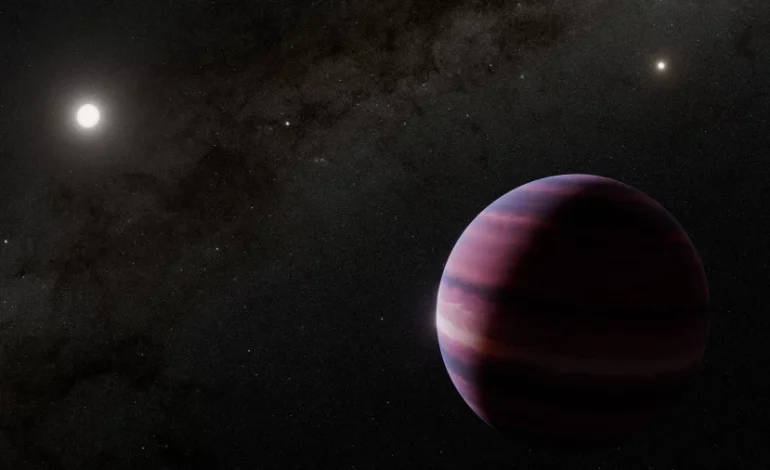The next time you watch Avatar and see those floating mountains and glowing forests of Pandora, just remember — science fiction might not be that far from reality.
Astronomers using NASA’s James Webb Space Telescope (JWST) have picked up what looks like a giant planet orbiting Alpha Centauri A, the closest sun-like star to Earth — just 4.3 light-years away. That’s basically cosmic next door.
And yes, this is the same star system where Pandora, the lush alien moon from Avatar, is supposed to orbit a fictional gas giant. Except this time, it’s not fiction.
The potential planet — not officially confirmed yet — seems to be a gas giant, about the size of Saturn or Jupiter, chilling in what astronomers call the “habitable zone.” That’s the sweet spot around a star where temperatures could be just right for liquid water — and, theoretically, life.
We’re talking temps of around -40 to -50°F, so it’s cold, but not wildly off the charts by space standards. And because the planet appears to follow an eccentric orbit, it might swing closer to its star at times, getting warmer as it goes.
Could there be moons? Probably.
“It probably does have moons,” says Charles Beichman, a NASA and Caltech astronomer on the research team. “And who knows — one of those moons might even be big enough, stable enough, and warm enough for life.”
It’s the kind of setup that makes sci-fi writers and real-life scientists giddy.
The discovery comes thanks to JWST’s Mid-Infrared Instrument (MIRI), which can block out a star’s blinding light and zoom in on fainter objects nearby — like a faint planet 10,000 times dimmer than its star.
The first sighting happened in August 2024, when astronomers spotted something interesting circling Alpha Centauri A. Follow-up observations in early 2025 didn’t catch it again — but that’s not unusual. The planet might’ve just slipped out of view.
To confirm the sighting, researchers ran millions of orbit simulations, factoring in the gravitational pull of Alpha Centauri B, its nearby stellar companion (Alpha Centauri is a three-star system). The models suggest it’s not only possible, it’s pretty likely this planet is real and just playing a cosmic game of hide-and-seek.
Hold up — let’s not get ahead of ourselves.
The planet is a gas giant, so it’s not a place humans could walk around or grow trees with glowing leaves. But a gas giant could absolutely host moons, and moons could have solid surfaces, oceans, and atmospheres. Think Jupiter’s Europa or Saturn’s Titan — both are icy, exotic, and high on NASA’s “might-support-life” list.
Some astronomers think this candidate could have moons the size of Mars, which is pretty huge by moon standards.
“That’s definitely an environment where you could potentially get life to evolve,” says Mary Anne Limbach, an exomoon expert from the University of Michigan.
There’s still a lot of work to do. Even the astronomers behind the discovery admit this is a “candidate planet,” not a confirmed one. Think of it as a really solid lead that needs follow-up.
David Kipping, a moon-hunter at Columbia University, says the planet might be too small to host giant moons, though a Titan-sized one is within reason. Problem is, Titan wouldn’t be able to keep its atmosphere if it lived this close to a star.
In other words, while a real-life Pandora is possible, it’s still a long shot. But the discovery proves we’re getting closer than ever to understanding our cosmic neighborhood.
If confirmed, this planet would be the closest directly imaged planet orbiting a sun-like star. It would also challenge a ton of what we thought we knew about planet formation — especially in chaotic environments like binary star systems.
“It’s right in our backyard,” says Beichman. “And if we want to explore exoplanets in detail — this is our best shot.”
The research is being published in The Astrophysical Journal Letters, and more observations are planned using JWST and the upcoming Nancy Grace Roman Space Telescope, launching in 2027.
For now, scientists are cautiously optimistic — and science fiction fans? They’re very excited.
Because the idea of a habitable moon orbiting a giant planet just four light-years away sounds less like a movie… and more like the future.










The latest news in your social feeds
Subscribe to our social media platforms to stay tuned